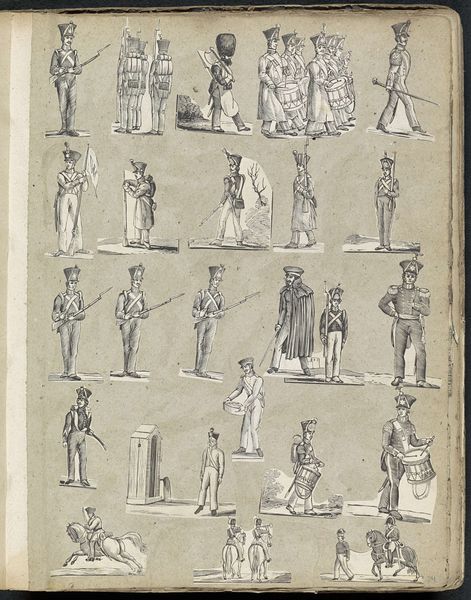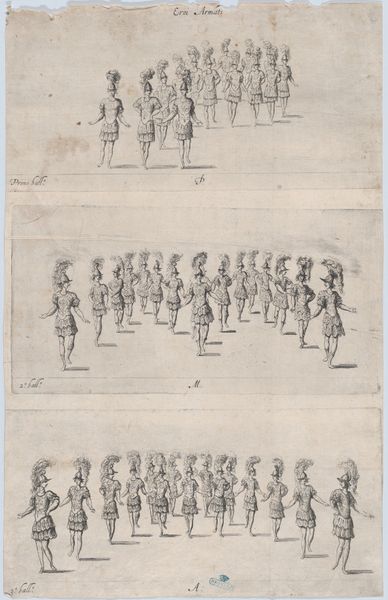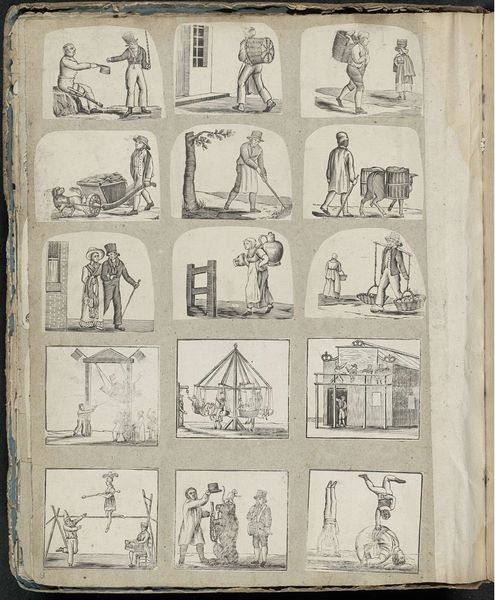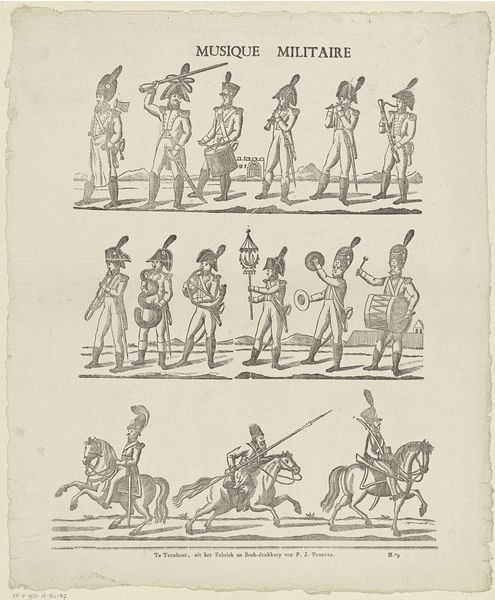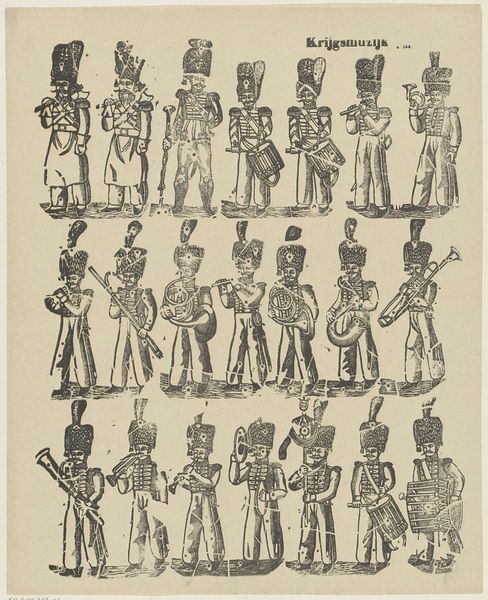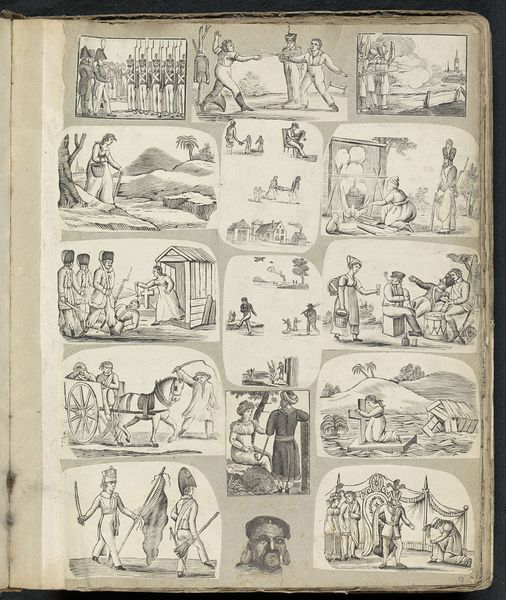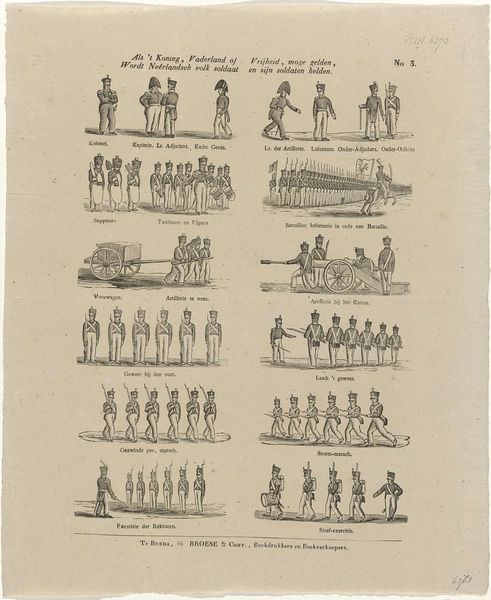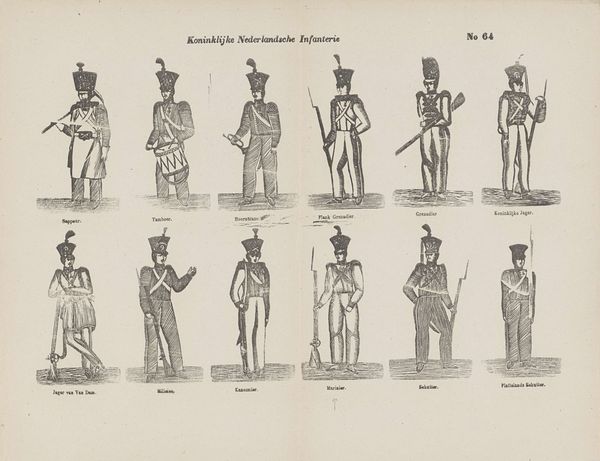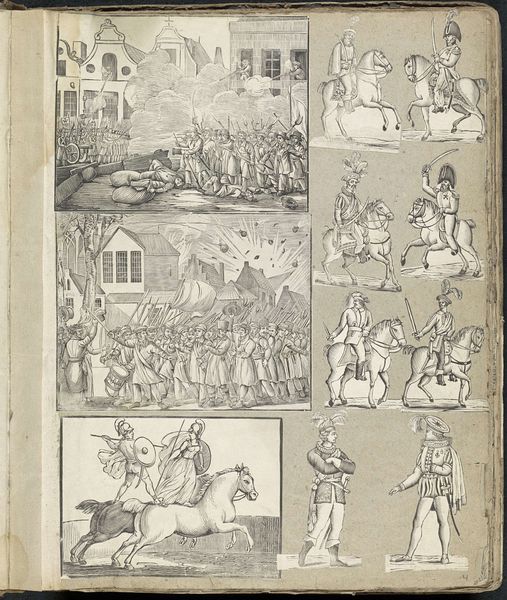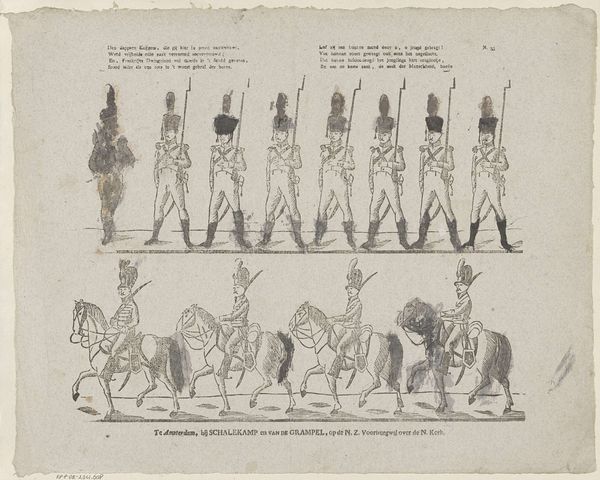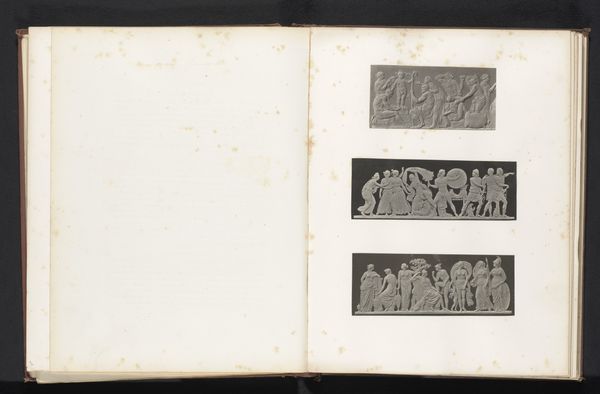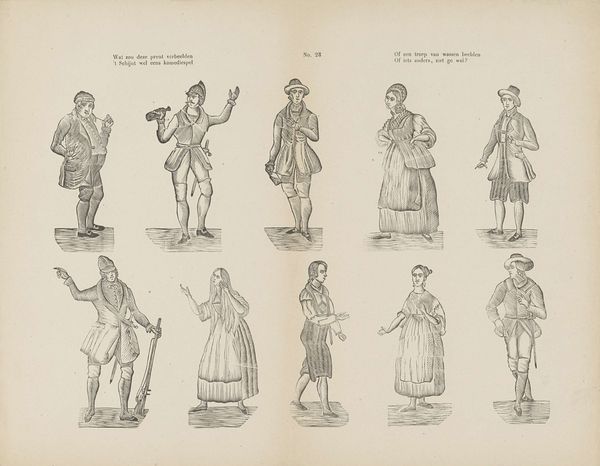
drawing, paper, ink, graphite
#
portrait
#
drawing
#
figuration
#
paper
#
ink
#
graphite
#
history-painting
#
academic-art
#
realism
Dimensions: height 395 mm, width 331 mm
Copyright: Rijks Museum: Open Domain
Editor: We’re looking at "Albumblad met diverse voorstellingen" made between 1814 and 1869, a drawing by Alexander Cranendoncq. It depicts many figures of soldiers, sketched in ink and graphite on paper. The figures are arranged in rows across the page, reminiscent of military formations. What structural elements stand out to you in this piece? Curator: Notice how Cranendoncq employs a rigorous system of repetition and variation. The figures, while uniform in dress, display subtle differences in posture and gesture. Observe the careful attention to line—how each stroke delineates the contours of the uniforms and weaponry. It's in this interplay of precision and nuance that the work finds its formal power. Consider the arrangement of these figures within the frame; what does their spatial relationship communicate? Editor: I see that while most are in formation, some stand apart, singly, maybe leaders of some kind? The crisp lines and repeating shapes create a real sense of order, and the empty background really focuses the attention on the figures themselves. So would you say the artist's intent was simply the rendering of the soldiers' forms and attire? Curator: The materiality of the drawing itself—the contrast between the starkness of the ink and the subtle gradations of graphite—creates visual interest, while the lack of color reinforces the formality of the military subject matter. The arrangement denies deep space. Editor: It's interesting to see how a piece seemingly about military depiction can reveal itself through purely formal means. Curator: Indeed. It challenges the notion of art as mere representation, compelling us to engage with the underlying structures that give meaning to the image. Thank you for prompting an analysis that transcends narrative, and instead considers the power of formal organization.
Comments
No comments
Be the first to comment and join the conversation on the ultimate creative platform.
